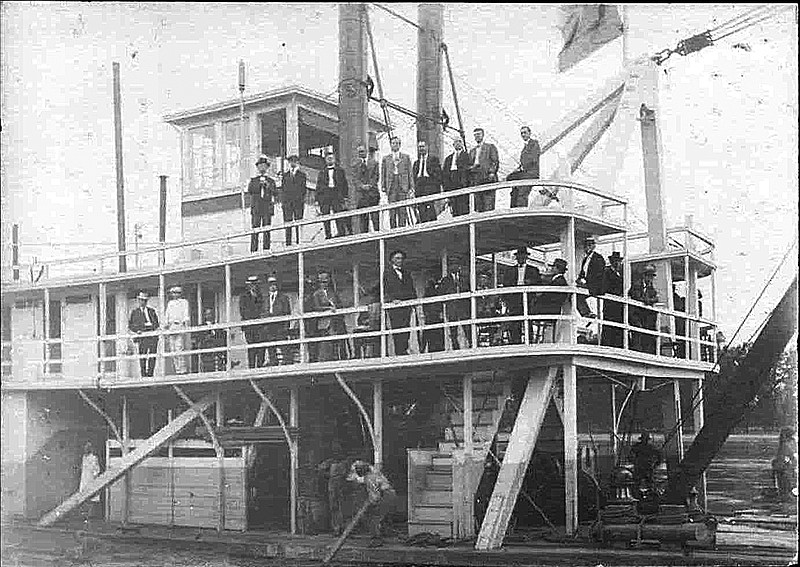By Aaron Brand
Texarkana Gazette
TEXARKANA, Texas - Dubbed the Red River Historian, Robin Cole-Jett will lead attendees on a virtual historical excursion up and down the Red River as she talks steamboats on Saturday.
Cole-Jett will discuss their 19th century prominence from 2 p.m. to 4 p.m. at the Ace of Clubs House. The era of steamboat travel along the Red was not long, but it was fascinating and important to regional history.
A trained historian with a master's degree from Texas Woman's University, Cole-Jett has worked at history museums and taught college, and she's particularly intrigued by the history of our Red River. She currently works for the Eisenhower Birthplace State Historic Site.
It's become her area of expertise, and she posts articles about the subject at her website, RedRiverHistorian.com. Popular articles there discuss ghost towns in the Red River Valley and the history of Bonnie and Clyde. Her books on the subject include "The Red River Valley in Arkansas."
"I've been studying the Red River for about 20 years now," Cole-Jett said, adding, "I'm just fascinated by the history of the Red River of the South." That's opposed to the other Red River that snakes its way through North Dakota, Minnesota and Canada.
"One thing that I became interested in, of course, from the very beginning was the great Red River Raft," Cole-Jett said. "It was a large obstacle that existed north of Natchitoches, Louisiana, that stretched about 100 miles northward, northwestern really, and then 100 miles across, if you will. It was a gargantuan log jam on the Red River."It impaired the ability of anyone who wanted to travel north of Natchitoches. Explorers would detail such troubles in journals when they encountered this "incredible obstacle," Cole-Jett said.
Because the U.S. wanted commercial development after the Louisiana Purchase was made, going north became important. This was the steamboat era, too.
"That was the transportation of the era. Steamboats really began to ply their trade around the 1810s and into 1820," Cole-Jett said. By 1830, getting steamboats on the Red became a priority. A connection close to Santa Fe, New Mexico, was desirable, and the Red can take people to the Mississippi River and New Orleans.
"It was like the highway they wanted to open," Cole-Jett said, noting steamboat captain Henry Shreve, whose name is reflected in the city of Shreveport, got the contract to remove that big logjam. This was the first federally-funded raft removal, she said, although others followed. "It was successful."
Once this happened, commerce could extend into Arkansas and today's Oklahoma, Cole-Jett said. "Once that came through they were able to bring the steamboats in," she said. However, logjam rafts later returned The gigantic raft itself was an ecological oddity, the historian observed.
"The Red River Raft was so incredibly unique," Cole-Jett said. "It was so diverse. There were literally trees growing on top of the logjam." Once the obstacles were all removed, then steam-powered trains made their appearance, an ironic development because this then devalued the prominence of steamboats.
This fascinating history is what Cole-Jett will explore during her Saturday discussion. Look for her to discuss the removal of the raft, the steamboats that came through and opening up the Red River to commercial traffic.
(Admission: $5. The Ace of Clubs House is located at 420 Pine St. Get advance tickets at TexarkanaMuseums.org/Events or via the Facebook event page. More info: 903-793-4831.)


